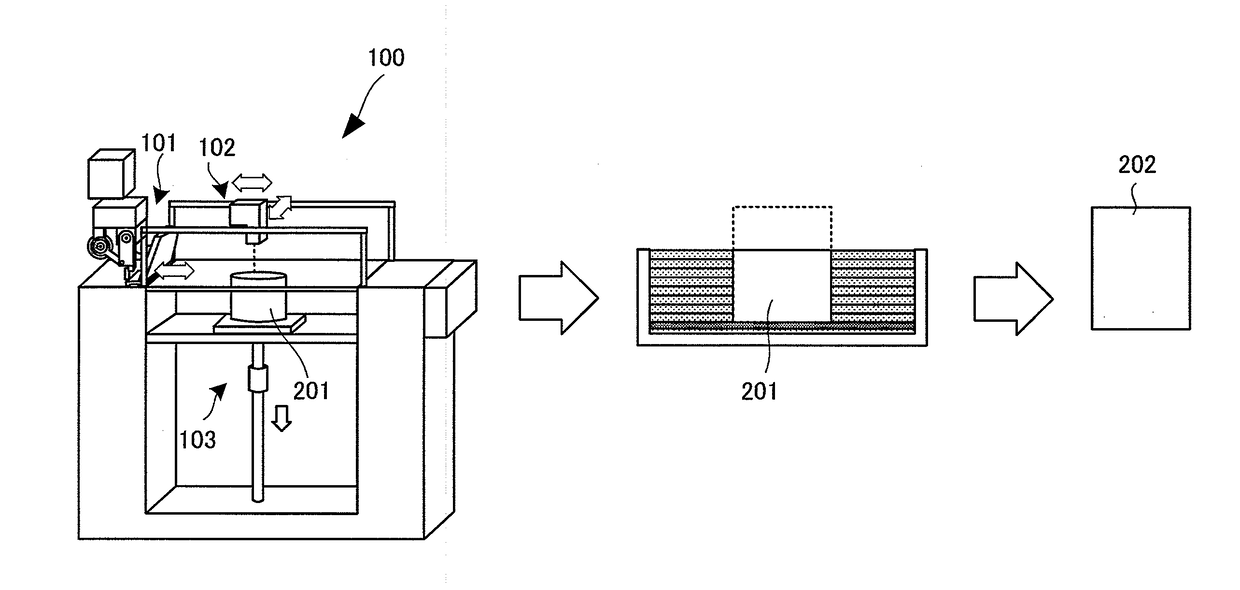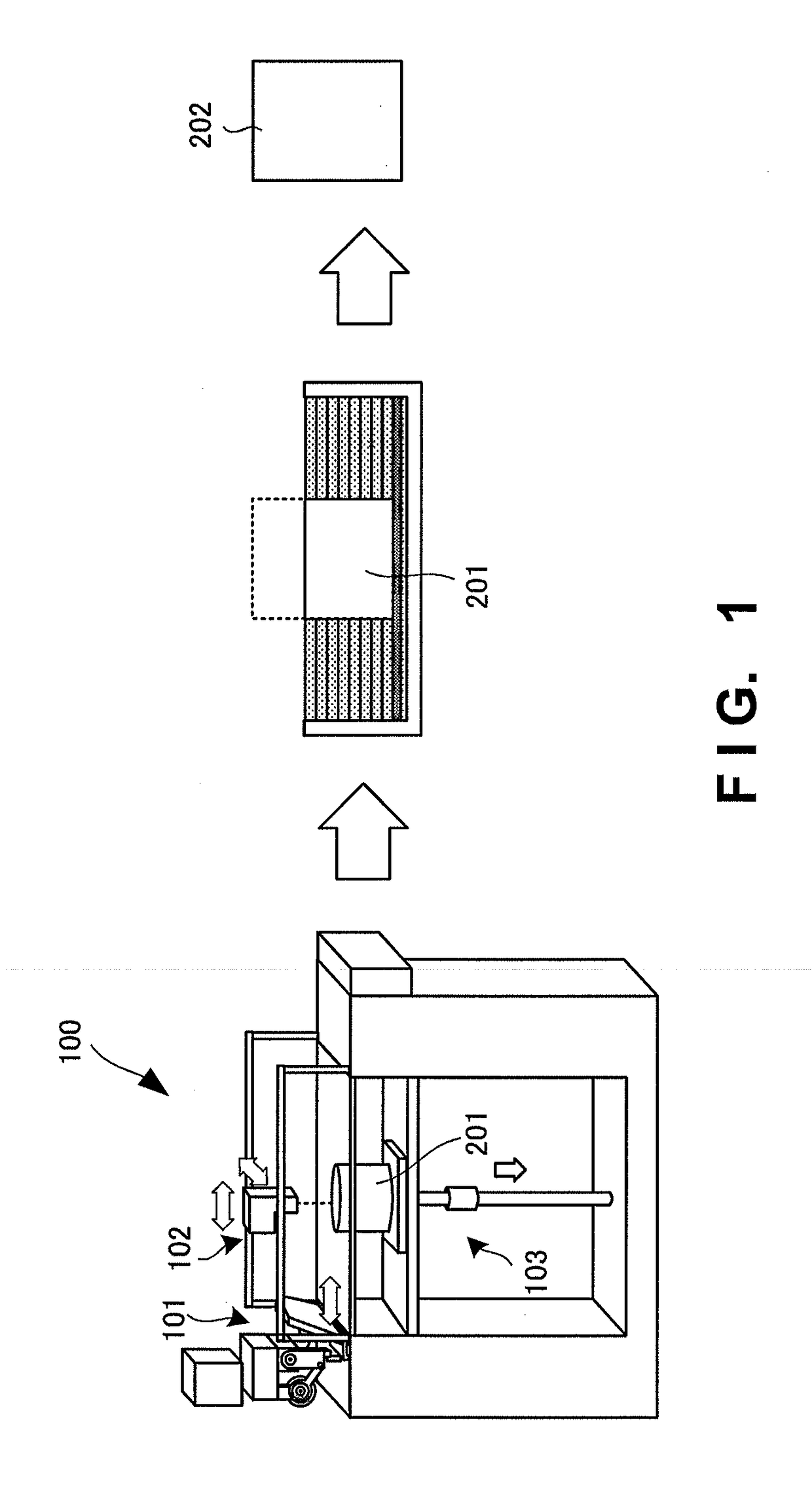Granular material, three-dimensional laminated and shaped mold, three-dimensional laminated and shaped mold manufacturing method, and three-dimensional laminated and shaped mold manufacturing apparatus
- Summary
- Abstract
- Description
- Claims
- Application Information
AI Technical Summary
Benefits of technology
Problems solved by technology
Method used
Image
Examples
example 1
[0096]A sand mixture in which magnesium sulfate was mixed was prepared as a refractory granular material by using silica sand (FS001-EU distributed by EX ONE, average grain size=106 μm).
[0097]This refractory granular material was laminated, by a blade mechanism including a recoater, on the bottom surface of a metal case placed in a three-dimensional laminating apparatus (manufactured by CMET) using a printing shaping method.
[0098]Then, a printing nozzle head was scanned on the laminated refractory granular material based on data obtained by 3DCAD design of the shape of a three-dimensional laminated and shaped mold, thereby printing water such that the discharge amount was 10 pts·mass with respect to 100 pts·mass of the laminated sand. After water was printed, the bottom surface (a shaping table) of the metal case was moved down by one layer (280 μm), the refractory granular material was laminated in the same manner as above, and water was printed on it such that the discharge amount...
example 2
[0103]Test pieces were manufactured and evaluated following the same procedures as in Example 1, except that coating sand using artificial sand (CERABEADS X #1450 manufactured by ITOCHU CERATECH, average grain size=106 μm) obtained by a sintering method was used as the refractory granular material. Table 1 shows the evaluation results of Example 2.
example 3
[0104]Coating sand coated with magnesium sulfate was prepared as a refractory granular material by using silica sand (FS001-EU distributed by EX ONE, average grain size=106 μm).
[0105]This refractory granular material was laminated, by a blade mechanism including a recoater, on the bottom surface of a metal case placed in a three-dimensional laminating apparatus (manufactured by CMET) using a printing shaping method.
[0106]Then, a printing nozzle head was scanned on the laminated refractory granular material based on data obtained by 3DCAD design of the shape of a three-dimensional laminated and shaped mold, thereby printing water such that the discharge amount was 10 pts·mass with respect to 100 pts·mass of the laminated sand. After water was printed, the bottom surface (a shaping table) of the metal case was moved down by one layer (280 μm), the refractory granular material was laminated in the same manner as above, and water was printed on it such that the discharge amount was 10 p...
PUM
| Property | Measurement | Unit |
|---|---|---|
| Grain size | aaaaa | aaaaa |
| Grain size | aaaaa | aaaaa |
| Temperature | aaaaa | aaaaa |
Abstract
Description
Claims
Application Information
 Login to View More
Login to View More - R&D
- Intellectual Property
- Life Sciences
- Materials
- Tech Scout
- Unparalleled Data Quality
- Higher Quality Content
- 60% Fewer Hallucinations
Browse by: Latest US Patents, China's latest patents, Technical Efficacy Thesaurus, Application Domain, Technology Topic, Popular Technical Reports.
© 2025 PatSnap. All rights reserved.Legal|Privacy policy|Modern Slavery Act Transparency Statement|Sitemap|About US| Contact US: help@patsnap.com



